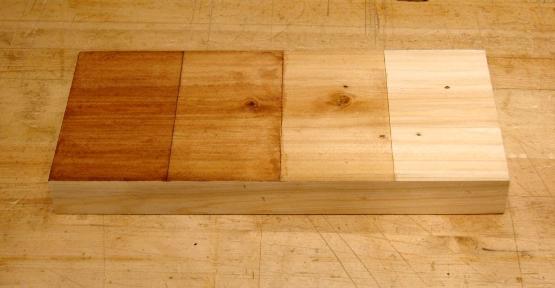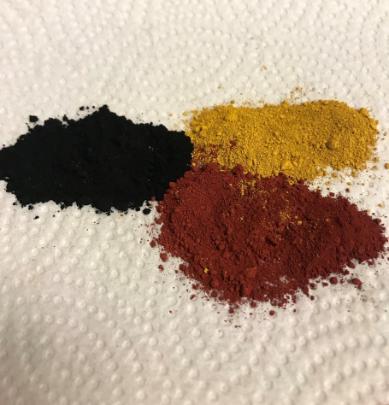VOLUME 14 ISSUE 8
WHAT’S HAPPENING AT MISSOURI S&T (FORMERLY UMR):
SHORT COURSE DATES
We will be offering "Introduction to Paint Formulation" May 20-24 (Spring 2019). This course is intended to give the person a fundamental knowledge of how to approach a starting formulation and troubleshoot it. This course involves both lecture and laboratory work.
We are also offering a new course, "Coatings Composition and Properties for Sales and Marketing Personnel" March 25-27 (Spring 2019). This course is designed for those in the industry who buy and/or sell raw materials into the coatings market, as well as those who buy or sell coatings or simply use coatings. The course is intended to help the newer person in the field gain a better understanding of the science behind paint. For more information, including course times and fees, click the course name above.
For more information see our web site at http://coatings.mst.edu and to register contact us at mstformulation@mst.edu or call 573-341-4419. **These courses are held on the Rolla Campus**
ONLINE SHORT COURSE
We are offering "Introduction to the Coating Systems" online short course. This course is targeted for automotive and aviation type OEM companies. This self-paced seminar will cover the painting system from the composition of paints to the evaluation of the dry film. The pigments, resin, solvents and additives will be discussed including their influence on the coatings performance. Color measurement, surface profile, and other evaluation criteria will be related to composition. The importance of surface preparation and other manufacturing criteria will show the system complexity and each step's importance.
We are offering "Surface Defects: Elimination from Human and Process Contaminants" online short course. This course addresses many of the issues in prevention and minimization of defects. The course covers the defects caused by the coatings process, as well as human issues, including personal care product causes. Several of the surface defects are discussed – from basic principles and real world automotive and aircraft examples. The highly practical approach of this course will greatly aid the personnel involved in the painting operation to reduce and systematically approach issues.
EMPLOYMENT TAB
There are no current job openings available. Anyone wanting to have job opening listed, please contact us at (573) 341-4419 or e-mail: mstformulation@mst.edu . You can also write to us at Missouri S&T Coatings Institute, BOM #2, 651 W. 13th St., Rolla, MO 65409-1020. Our web site is http://coatings.mst.edu
TECHNICAL INSIGHTS ON COATINGS SCIENCE
Basic Components of Wood Stains
Abbie Braden, Missouri University of Science and Technology
Wood is one of the key components of construction. It can often be seen inside homes as trim, doors, or cabinets. This wood must be treated in some manner so it withstands wear and strain as well as exposure to light or other atmospheric conditions. Some people may prefer the natural look of wood, in which case a simple lacquer or varnish would suffice in coating the material. However, some may be coated with a stain that either colors the wood or simply enhances the natural colors and grain. Stains are different from other types of coatings because they sink into the wood, instead of simply forming a film on the surface.

Figure 1. Wood with various stains
Stains can be water based, oil based, or solvent based. Water based stains are desirable because they are easy to work with and clean up, and are often more environmentally friendly than the other two options. These water based stains are able to sink into the soft areas of the wood more freely than the harder parts of the grain. This enhances the appearance of the natural grain; however, it also may raise the grain and cause slight deformations in the wood which will require sanding.
Oil based stains often consist of linseed or tung oil along with some type of solvent. These do not penetrate the wood as much as water based stains, so there is less worry about raising the grain or warping the wood in any way. In fact, oil based stains have the opposite effect on the grain and tend to diminish its appearance.
Solvent based stains, or “spirit stains”, are made often from mineral spirits, or similar organic solvents. Some solvent based stains may contain oil, and vice versa, making the two very similar in behavior. These are perhaps the most difficult to work with due to the volatility of the material. It tends to dry very quickly and may be difficult to achieve a uniform coating. The wood absorbs solid based stain equally in both soft and hard areas, which does not enhance the grain.
The type of pigment used in these stains is also important to consider. Solid pigments must be insoluble in order to prevent bleeding. The most common pigments used in stains are iron oxides and carbon black. The particle size is what dictates the level of transparency in the stain. Smaller particles will provide a more transparent appearance because they scatter light differently than large particles. Larger particles scatter light more and appear more opaque due to the higher refraction of light. Aniline dyes have also been used in stains, however they are not as prominent because they are not as stable when exposed to UV light and also have a tendency to bleed.

Figure 2. Carbon Black, Yellow Iron Oxide, Red Iron Oxide
Softwoods such as cedar may appear darker when stained the same as a hardwood, like oak. This is partially because the softwood is less dense and allows the stain to sink in further. Hardwoods have a higher percentage of lignin, which is a rigid organic polymer that provides strength and resistance to the wood. The areas in the wood where stain is absorbed easier is made of cellulose, which is a carbohydrate compound. In order to adjust the two to stain to a similar color, a conditioner may be applied to the soft wood. Conditioners are often solvents that are used to fill the pores of the softwood and make it behave more like a hardwood when being stained.
References
(1) Weismantel, G. Paint handbook; McGraw-Hill: New York, 1981.
(2) Goodier, J. Dictionary of painting and decorating; Arnold: London, 1990.
(3) Stewart, M. National Paint Dictionary; 3rd ed.; 1942.
(4) https://www.fpl.fs.fed.us/documnts/pdf1993/willi93b.pdf (accessed Dec 12, 2018).
